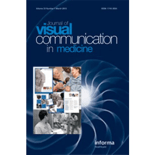
Journal of Visual Communication in Medicine
Scope & Guideline
Exploring the Intersection of Visual Arts and Healthcare
Introduction
Aims and Scopes
- Visual Communication in Healthcare:
The journal explores how visual elements—such as illustrations, infographics, and multimedia—can be used to improve understanding of medical concepts, enhance patient education, and facilitate communication between healthcare professionals and patients. - Innovative Educational Strategies:
It emphasizes the use of novel educational tools and methodologies, including virtual reality, augmented reality, and interactive models, to enhance medical education and training. - Interdisciplinary Collaboration:
The journal promotes collaboration between artists, medical professionals, and educators to create impactful visual content that aids in understanding complex medical information. - Cultural Sensitivity and Inclusivity:
Research often highlights the importance of culturally responsive communication, particularly in the context of public health messaging, ensuring that diverse populations are effectively reached and engaged. - Research on Visual Perception and Effectiveness:
The journal investigates how different visual formats affect comprehension and retention of medical information, contributing to evidence-based practices in visual communication.
Trending and Emerging
- Digital Health Communication:
There is a notable increase in research focused on digital platforms for health communication, such as social media and mobile applications, particularly in relation to COVID-19 messaging and public health campaigns. - Interactive and Immersive Learning:
Emerging methodologies such as virtual reality and augmented reality are gaining attention for their potential to transform medical education, offering immersive experiences that enhance learning outcomes. - Public Health Messaging and Behavioural Change:
Recent studies highlight the role of visual communication in influencing health behaviors, particularly in crisis situations like the COVID-19 pandemic, indicating a growing interest in how visual formats can drive public health initiatives. - Visual Storytelling and Graphic Medicine:
The use of comics and visual narratives to communicate health information and patient experiences is on the rise, showcasing the effectiveness of storytelling in engaging diverse audiences and enhancing understanding. - Multisensory Approaches to Education:
Research into multisensory methods, including the integration of sound and touch with visual elements, is emerging, emphasizing the potential for these approaches to improve learning and retention in medical education.
Declining or Waning
- Traditional Medical Illustration:
There seems to be a waning interest in traditional forms of medical illustration, as the field increasingly embraces digital formats and interactive media, which are perceived to be more engaging and effective in conveying complex information. - Static Educational Materials:
The use of static infographics and posters is declining in favor of dynamic and interactive formats, indicating a shift towards more engaging and immersive educational experiences. - Focus on Print Media:
As digital platforms become more prevalent for sharing medical information, the emphasis on print media for education and communication in medicine is diminishing, reflecting broader trends in media consumption. - Niche Medical Topics:
Certain niche areas of medical illustration and communication that were previously explored are becoming less frequent, possibly due to a focus on broader, more impactful health issues, especially in the context of global health crises.
Similar Journals

Journal of Mathematics and the Arts
Exploring the Harmony of Numbers and CreativityThe Journal of Mathematics and the Arts, published by Taylor & Francis Ltd, is a unique interdisciplinary journal that explores the rich intersection of mathematics and artistic expressions, providing a platform for researchers, professionals, and students alike. With an ISSN of 1751-3472 and an E-ISSN of 1751-3480, this journal has been an important resource since its inception in 2007 and continues to expand its reach through 2024. The journal is particularly noteworthy for its Q1 ranking in Visual Arts and Performing Arts among the 2023 category quartiles, reflecting its impact in this creative area, although it holds a Q4 ranking in Computer Graphics and Computer-Aided Design and Mathematics (miscellaneous), showcasing its broader mathematical exploration. While it currently does not offer open access options, its rigorous peer-review process ensures the publication of high-quality research that contributes to the academic discourse on the aesthetic dimensions of mathematical concepts. With a focus on fostering collaboration between the arts and sciences, this journal stands as a vital hub for innovative thought and practice, making it essential reading for those invested in the evolving dialogue between these dynamic fields.
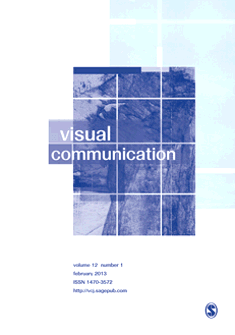
Visual Communication
Bridging Theory and Practice in Visual Communication.Visual Communication, published by SAGE Publications Inc, is a leading journal in the fields of Communication and Visual Arts and Performing Arts, recognized for its significant contribution to theoretical advancements and empirical research. With an impressive impact factor and ranked in the Q2 quartile for Communication and Q1 for Visual Arts and Performing Arts, this journal attracts a diverse audience of researchers, professionals, and students dedicated to exploring the multifaceted nature of visual communication. Spanning from 2002 to 2024, the journal publishes high-quality articles that delve into the intricate relationship between visual culture and communication practices. It consistently ranks favorably within Scopus, placing in the 97th percentile for Visual Arts and Performing Arts and the 76th percentile for Communication, making it a vital resource for those seeking to advance their understanding of visual discourse. While the journal is not open access, its subscription model ensures rigorous peer review, thereby maintaining high academic standards. The global reach of Visual Communication solidifies its role as an essential platform for innovative dialogue and scholarship within the academic community.
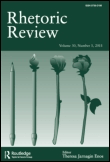
Rhetoric Review
Cultivating Knowledge in Rhetoric and LinguisticsRhetoric Review, published by Routledge Journals, Taylor & Francis Ltd, serves as a vital platform for scholars in the fields of Rhetoric, Linguistics, and Literary Theory. Established in 1982, this esteemed journal presents a blend of theoretical frameworks and empirical studies that advance our understanding of rhetorical practices across diverse contexts. It holds a prestigious Q1 ranking in Literature and Literary Theory and a Q2 ranking in Linguistics and Language as of 2023, reflecting its influential role in shaping contemporary discourse in these disciplines. With an impressive Scopus rank of #85 out of 1106 in Literature and Literary Theory, Rhetoric Review is a go-to resource for researchers, professionals, and students aiming to explore the intricacies of language and communication. While the journal is not open access, it offers a comprehensive range of articles, reviews, and theoretical discussions that contribute significantly to both academic scholarship and practical applications in rhetoric. The journal’s commitment to publishing pioneering research ensures its relevance in an ever-evolving academic landscape.

Journal of Eye Movement Research
Bridging Research and Practice in OphthalmologyJournal of Eye Movement Research is a pivotal open-access journal dedicated to the exploration of eye movement science and its implications across various disciplines, including ophthalmology and neuroscience. Published by INT GROUP EYE MOVEMENT RESEARCH, this journal has been a beacon of knowledge since its inception, offering a platform for researchers and professionals to share their findings and insights in an impactful and timely manner. With an impressive 2023 categorization in Q2 for Ophthalmology and Q3 for Sensory Systems, it reflects a strong reputation within the academic community, ranking 59th out of 137 in Ophthalmology and 29th out of 42 in Sensory Systems according to Scopus metrics. The journal is committed to facilitating open access research, having adopted this model since 2007, which allows for wider dissemination of scholarly work and fosters collaboration among academics worldwide. Located in Switzerland, the Journal of Eye Movement Research not only contributes to the understanding of eye movement behavior but also influences practical applications in clinical and educational environments, making it an essential resource for researchers, healthcare professionals, and students alike.
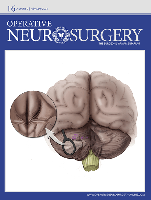
Operative Neurosurgery
Transforming Neurology and Surgery with Cutting-Edge Insights.Operative Neurosurgery is a distinguished peer-reviewed journal published by Lippincott Williams & Wilkins, focusing on the rapidly evolving fields of neurology and surgery. With an ISSN of 2332-4252 and an E-ISSN of 2332-4260, this journal serves as a vital platform for disseminating high-quality research, clinical studies, and innovative practices from 2012 through 2024. As of 2023, it holds a reputable position in category quartiles—Q3 in clinical neurology and Q2 in surgery—demonstrating its commitment to contributing to the scientific community. The journal's placement in the Scopus rankings also reflects its significance, with a ranking of #177 out of 551 in surgery and #229 out of 400 in clinical neurology. Although it operates under a traditional subscription model, the journal remains dedicated to enhancing access to pivotal information that shapes operative techniques and patient outcomes, making it an essential resource for researchers, surgeons, and clinicians alike. Through rigorous peer review and a commitment to academic integrity, Operative Neurosurgery invites contributions that advance knowledge and foster further exploration within these crucial fields.

Visual Studies
Illuminating the dialogue between art and society.Visual Studies, published by Taylor & Francis Ltd, is a leading international journal that serves as a vital platform for interdisciplinary scholarship in the fields of visual arts, cultural studies, and anthropology. Established in 2002 and continuing strong through 2024, it holds impressive rankings including Q1 in Cultural Studies and Visual Arts and Performing Arts, as well as Q2 in Anthropology, reflecting its significant impact and prestige within these disciplines. With a robust Scopus ranking placing it in the 89th percentile for Visual Arts and Performing Arts, this journal does not only publish original research but also fosters rich dialogues on visual culture, representation, and critical theory. Although it is not open access, researchers, practitioners, and students alike can benefit from its rigorous peer-reviewed content, which contributes to advancing knowledge and understanding of visual phenomena. Located in the United Kingdom, Visual Studies continues to shape the conversations surrounding visual practices and their societal implications.
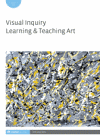
Visual Inquiry-Learning & Teaching Art
Innovating the Future of Art Teaching and LearningVisual Inquiry: Learning & Teaching Art is a premier journal published by Intellect Ltd, dedicated to exploring innovative methods and practices in art education. With its ISSN 2045-5879 and E-ISSN 2045-5887, the journal provides a vital platform for researchers, educators, and practitioners to share their findings and insights into the pedagogy of visual arts. Although currently not open access, its influence in the field of art education is underscored by the quality of contributions from both established and emerging scholars. As the dialogue surrounding visual literacy and creative methodologies evolves, this journal remains essential for those invested in improving teaching strategies and fostering artistic expression. Its commitment to advancing knowledge in art education makes it a critical resource for anyone looking to enhance their understanding of how art can effectively be taught and learned.

Imago-Revista de Emblematica y Cultura Visual
Unveiling the Narratives Behind ImagesImago-Revista de Emblematica y Cultura Visual, published by Publicaciones Univ Valencia, serves as a vital platform for scholarship in the multidisciplinary fields of Visual Arts, Communication, and Linguistics. This Spanish journal has been recognized for its contributions to academic discourse, showcasing works that delve into the complexities of visual culture, emblems, and their interpretations within contemporary society. With an impressive ranking in Scopus, placing it in the Q2 category for Visual Arts and Performing Arts, and Q3 for Linguistics and Language in 2023, it stands out among its peers as a reputable source for researchers and scholars. Although it operates under a non-open access model, its content remains instrumental in advancing the understanding of visual narratives and their cultural implications. Located in Valencia, Spain, Imago not only reflects the academic rigor of its contributors but also fosters collaboration and exchange of ideas, making it an essential resource for professionals, students, and academics alike.

Junctures-The Journal for Thematic Dialogue
Bridging gaps in knowledge with thematic insights and perspectives.Junctures: The Journal for Thematic Dialogue is a distinguished academic platform published by Otago Polytechnic - Te Kura Matatini Ki Otago, based in New Zealand. With the ISSN 1176-5119 and E-ISSN 1179-8912, this journal offers a unique scope that encompasses cultural studies, literature, and the visual and performing arts, providing a critical space for scholars and practitioners to explore interdisciplinary thematic dialogues. Despite being categorized in the lower quartiles of the 2023 Scopus rankings, the journal serves as an important venue for emerging voices in the arts and humanities, facilitating innovative discussions around contemporary cultural issues. While currently not an open access journal, it remains dedicated to fostering scholarly engagement and thought-provoking discourse, enhancing the academic landscape from 2009 to 2012, and again from 2015 to 2020, with a resurgence in 2022 to 2023. Researchers, professionals, and students alike will find in Junctures a valuable resource for advancing the understanding and appreciation of the arts and culture.

Universitas Medica
Empowering healthcare through innovative research.Universitas Medica is a prominent journal dedicated to advancing the field of medical sciences, published by the Pontificia Universidad Javeriana, Facultad de Medicina. Since its transition to an Open Access format in 2010, it has played a pivotal role in promoting the dissemination of high-quality medical research. Featuring a diverse array of studies encompassing clinical practice, public health, and medical education, Universitas Medica aims to provide researchers, healthcare professionals, and students with invaluable insights and the latest findings in medicine. With a focus on enhancing accessibility and fostering collaboration across the medical community, this journal stands out as a critical resource for those looking to stay abreast of innovations and trends. The journal is indexed under ISSN 0041-9095 and E-ISSN 2011-0839 and operates from its base in Bogotá, Colombia, contributing significantly to the scientific landscape both regionally and internationally.